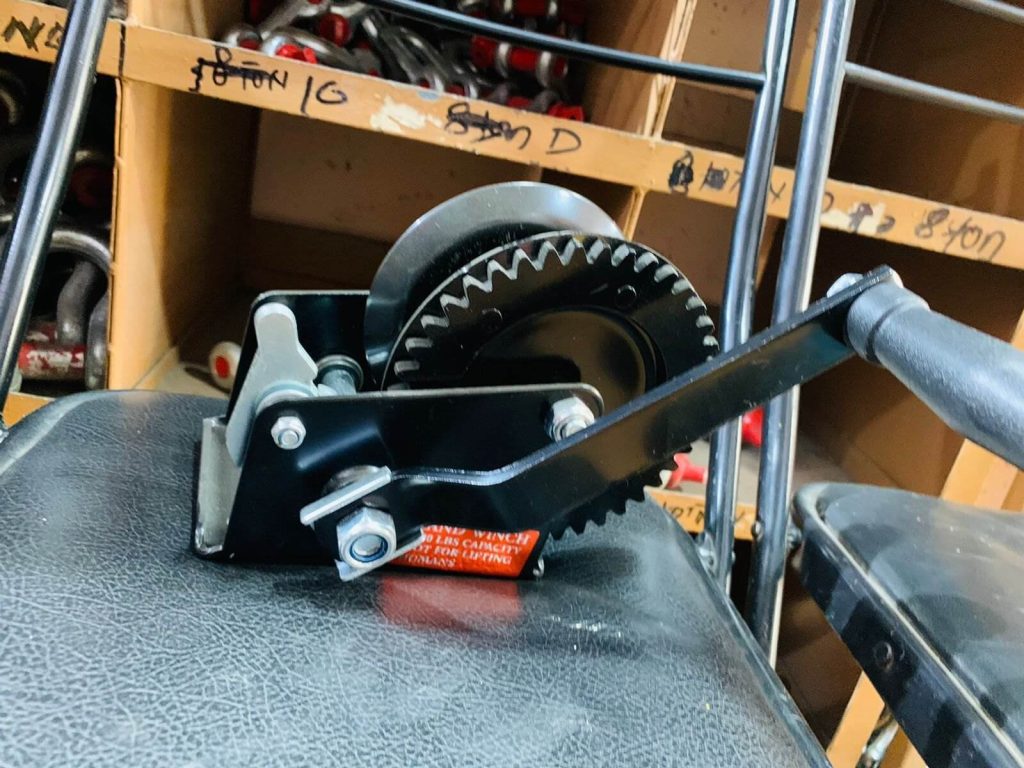Whether you’re working on a construction site, loading equipment, or using a winch for outdoor activities, releasing the winch correctly is crucial.
This comprehensive guide covers the nitty-gritty of safely unlocking and releasing a hand winch, ensuring you can tackle the task with confidence and prevent accidents.
Prerequisites
Types of Hand Winches
- Ratchet: Allows the cable to be pulled out or retracted by moving the handle back and forth.
- Spur Gear: Features a simple gear mechanism, offering a balance of power and ease of use.
- Worm Gear: Provides high load capacity and safety, as it prevents the load from slipping back.
Identifying your winch type is the first step in understanding its specific release mechanism and components.
Gathering Necessary Tools and Equipment
Equip yourself with gloves, safety glasses, and any other tools specified by your winch’s manual. These tools might include wrenches or levers designed for your winch’s release mechanism.
Preparing for Winch Release

Inspect the winch and cable thoroughly for any signs of damage, wear, or potential issues. A compromised winch or cable can lead to failures during the release process, so it’s better to address any concerns beforehand.
Ensure a stable and secure setup for the winch, with a clear path for the cable payout. Remove any obstructions or obstacles that could interfere with the release process or pose a tripping hazard.
Step-by-Step Guide to Releasing a Hand Winch
Step 1: Disengaging the Ratchet or Brake Mechanism
Each hand winch comes equipped with a mechanism designed to control the unwinding of the cable and to securely hold the load in place. This can be a ratchet or a brake system, depending on the type of winch you have.
- For a ratchet winch: You’ll typically find a lever or knob that needs to be shifted to disengage the ratchet. This action allows the drum to rotate freely, enabling the cable to be pulled out or rewound without the ratchet stopping it.
- For a brake system: The brake might be disengaged by a lever, button, or knob, depending on the winch’s design. This brake is what prevents the drum from spinning and releasing the cable. Once disengaged, the drum can move freely.
It’s crucial to perform this step cautiously to avoid any accidental release of tension that might cause the load to drop or the cable to unwind uncontrollably.
Step 2: Releasing Tension on the Winch Cable Gradually
After disengaging the locking mechanism, the next step involves carefully managing the release of tension. This is where you control how much the cable unwinds. Doing this slowly is key to preventing any sudden movements that could potentially lead to accidents or damage.
- Gradual Release: By controlling the handle or using the unwinding lever, allow the cable to slacken off slowly. This controlled release helps in managing the load, especially if it’s heavy or under a lot of tension.
Step 3: Controlling the Cable Payout and Preventing Backlash
As the cable begins to unwind, it’s essential to control its speed and prevent it from tangling or creating a backlash. Backlash can occur if the cable is allowed to unwind too quickly, causing it to whip or tangle.
- Managing Speed: Use one hand to maintain slight tension on the cable as it unwinds, guiding it to ensure it doesn’t snarl or kink. Some winches come with a guide mechanism to help with even payout, but manual guidance may still be necessary.
- Preventing Tangles and Whipping: Keep a steady pace and ensure the cable is laying down smoothly as it unwinds. This prevents knots and reduces the risk of the cable whipping back, which can be dangerous.
Step 4: Fully Releasing the Winch and Securing the Cable
Once the load has been successfully lowered or the desired amount of cable has been released, it’s time to fully release the winch’s tension and secure the cable.
- Ensuring Neat Storage: Wind any slack cable onto the drum neatly. This prevents the cable from becoming tangled or damaged while not in use.
- Securing the Cable: If your winch has a locking mechanism for the cable end or a hook, ensure it’s securely fastened to prevent it from unwinding or dragging on the ground.
Safety Precautions and Tips
Always wear appropriate personal protective equipment (PPE) like gloves and safety glasses. Maintain proper body positioning to avoid pinch points, and ensure your work area is clear and communicated to any assistants or bystanders.
Troubleshooting Common Issues
- Stuck or Jammed Winch Mechanisms: Apply penetrating oil and gently tap the mechanism. If it remains stuck, consult the manual or a professional.
- Tangled or Kinked Cables: Unwind the cable fully and straighten it out. Replace the cable if it’s severely damaged.
- Uneven Cable Payout or Backlash: Keep tension on the cable as it unwinds and guide it evenly onto the spool.
Conclusion
Mastering the release of a hand winch is crucial for anyone handling heavy loads. By prioritizing safety and following the correct procedures, you can ensure the longevity of your winch and safeguard against accidents.
Remember, when in doubt, seeking professional assistance is always the best course of action. Stay safe and handle your equipment with care.

